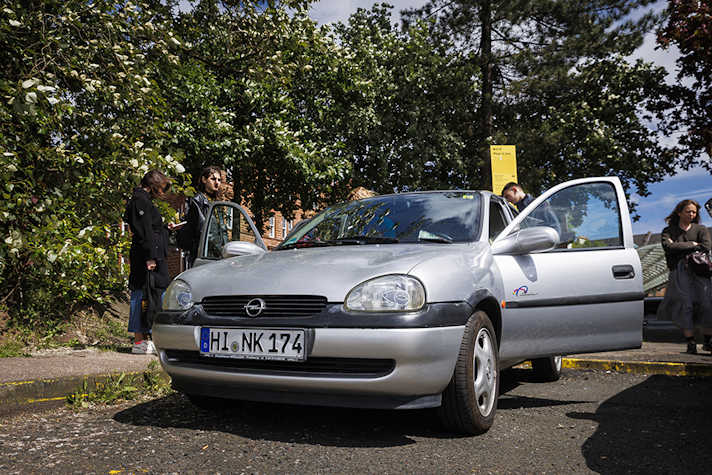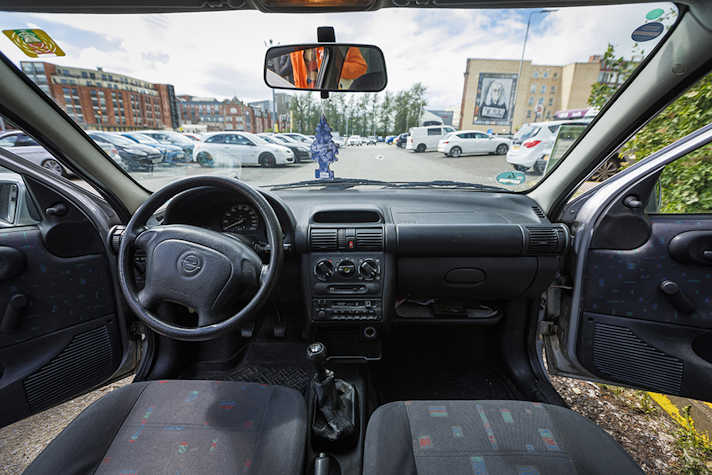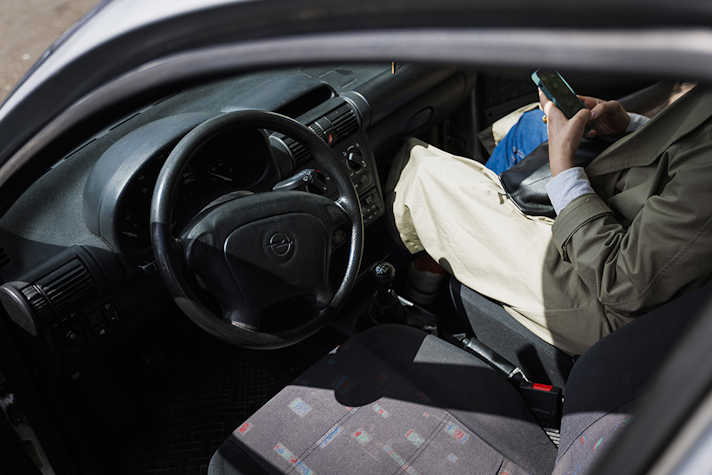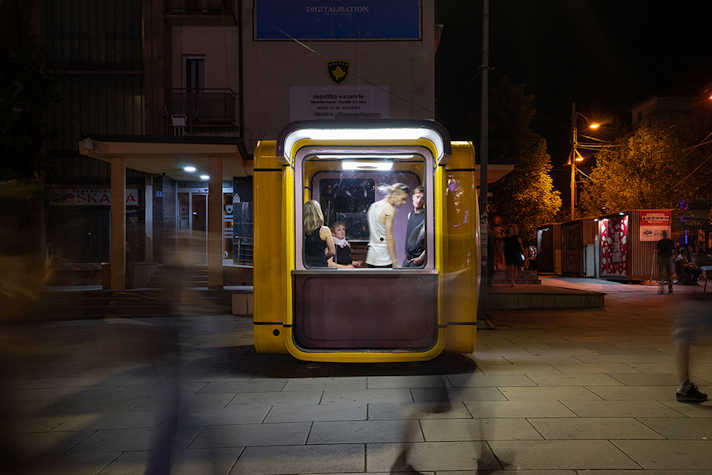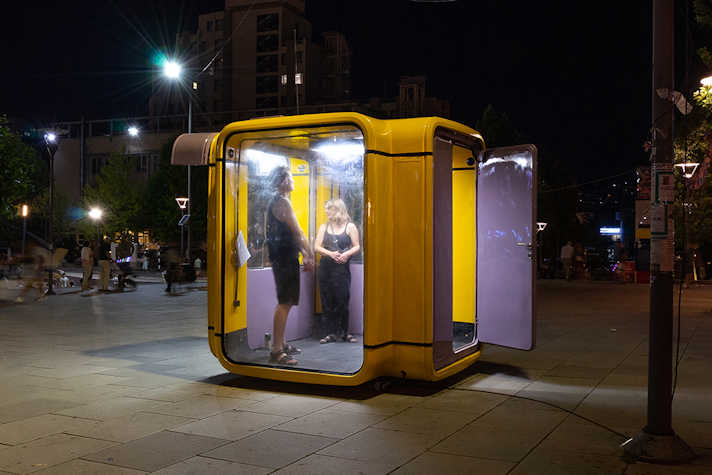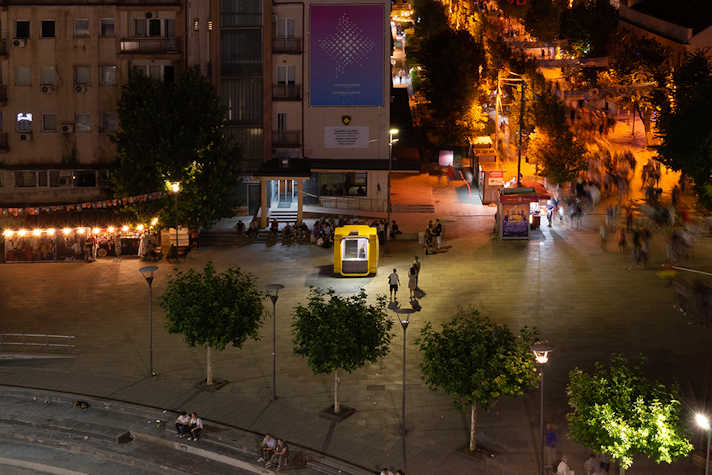- Dates and Opening times
Fri 7 – Sat 23 June
Wed – Sun, 2pm – 6pm- Venue
Glasgow King Street Car Park
King Street
G1 5QT- Participants
- Susan Philipsz with Dresden University of Fine Arts students and Hill 52 Radio at Glasgow School of Art
- Presented by
Susan Philipsz, Dresden University of Fine Arts and Hill52 Radio, Glasgow School of Art
- Supported by
Supported by University of Fine Arts Dresden and The Glasgow School of Art. Additionally supported by Glasgow International with funds from the Scottish Government’s Festivals EXPO Fund. With thanks to Mono for in-kind support.
- Accessiblity
Limited Level Access: Some parts of the venue are level or ramped access, other areas can only be accessed via stairs
For additional access information, click here
Radio International is a series of radio transmitted sound works that are broadcast to a car radio in a parked car in Glasgow city centre. Initiated by artist Susan Philipsz, the project is a collaboration between students from Dresden University of Fine Arts and Glasgow School of Art.
Guglielmo Marconi, the pioneer of radio, suggested that sounds once generated never die – they fade, but they continue to reverberate as sound waves across the universe. The starting points for Radio International were an archive of Radio Interval Signals that are available to hear online and Jean Cocteau’s film Orpheus from 1950. Students from Dresden University of Fine Arts and Glasgow School of Art have engaged with these materials to produce unique sound works designed for broadcast.
Most transmission art is made to be experienced at home or from a private location, but for Radio International, the artists produced transmissions designed to be experienced from a stationary car that is parked in Glasgow city centre. In Jean Cocteau’s Orpheus, 1950, the main protagonist is obsessed with the coded messages and abstract poems that are transmitted from an unknown station to his car radio. Through their transmission, Radio International will create both a sense of intimacy while also suggesting other locations and dimensions beyond our immediate surroundings. Fragments of the work You Are Not Alone, 2009, by Susan Philipsz are interspersed between each of the students’ works. Radio International is an ongoing project previously manifested at Dresden University of Fine Arts, 2021, and Manifesta 14 Prishtina, 2022.
Radio International includes contributions from:
Friedrich Andreoni, Yoonyoung Bae, Justīne Emīlija Brieze, Hafssa Amina Codraro, Luca Diebold, Oleh Dmytruk, Franz Eggerichs, Mona Freudenreich, Li Kirnbauer, Patryk Kujawa, Richard Laber, Claus Lam, Isabell Alexandra Meldner, Alisa Omelianceva, Alban Rosenberger, Rebecca Rudolf, Ronja Sommer, Alexander Wolframm, Ivy Tanit, Artemis Panagiotidou, Antanas Jacinevicius, Jordan MacRae, Yiwen Bo, Jonny Keen, Mimi Belilty, Huiqi Deng, Ines Boyle, Maeve Dolan, Lilly Lavorato, Lucille Brownrigg, Aly Gear, Abie Joyce B. Soroño, Robyn Bamford, Sorley MacRae, Ishbel Angus, Conor Browne, Celeste MacLeod-Brown, Claudia Sweet, Nat Hairsine, Charli R, Amelie M, Sancia McHenry, Yimin Xiang, Yaqing Hu, Lily Evans, Aliya Prichard-Casey, Rudy Sinclair , Josh Breen-Tucci, Harry Baker, Rufus Horton, Tom Macfadyen

